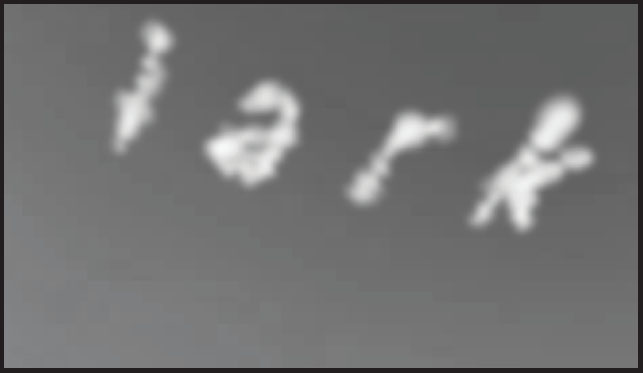
A Field Guide to the Birds of Indiana
Although there is no way to say for sure that Art Smith, The Bird Boy of Fort Wayne, read much more than the literature provided by the various publishing ventures of the Church of Christ, Scientist, this skywriting (produced with the oily black soot of his initial formulations of smoke) which appeared over the rapidly disappearing Limberlost of Adams and Jay counties in northeastern Indiana, suggests he was familiar with the writings of Gene Stratton-Porter. In order to complete this stunt, he would have flown south from Fort Wayne to circle above the small town of Geneva. This would have been in the fall of 1913 or the spring of 1914. By that time the great 13,000-acre wooded swamp was nearly drained, primordial Lake Engle siphoned off and lowered, leveled into a series of muddy puddles, the forest logged for barrels and shipbuilding. With the vast wetlands vanished, the sky above would have been empty of most native avian species and its migratory fowl diverted further west to the Mississippi Valley flyways. The carrion raptors, however, would have been busy still, scouring the cloudless sky.
Art, The Bird Boy of Fort Wayne, Smith, returned in 1915 to the drained and now cultivated tableland that had once been the Limberlost. The agricultural tiling of the retired swamp was extensive and quite successful, the air that day seems to have been saturated with a thick particulate dust kicked up by the moldboard plowing proceeding below. He would have had ample opportunity to observe the ambitious plotting of township section roads and the platting of the future farm fields that create the telltale signature of Midwestern agriculture. The cardinal, a common bird with extraordinary scarlet plumage and of a species that does not flock, would become the state bird of Indiana in 1933. It would have adapted readily to the now cleared fields studded with the thinned copses of second growth woodlot left to stand, spreading out to the distant hazy horizon. It is thought that this was Art Smith’s first attempt to tint a work of skywriting, reflecting, in the opaque fog, the coloring of its vibrant subject.
During the 1933 debate in the legislature that resulted in the election of the cardinal as the state bird an amendment was offered that nominated the firefly as the Indiana state insect. During the summer barnstorming seasons, his performances concluded in the dusk, Art Smith piloted his acrobatic aeroplane low over the flat Indiana farm fields that once had been the bed of a shallow inland sea. Fireflies in the millions, it seemed to him, sparked off of the tasseled tops of the cornstalks. The swarms of flashing insects glimmered as they rose up in pulsing clouds, twisting drafts of strobing light. The leading edges of his craft’s canvas wings became coated with the light as he struck through the buggy nebula, the light still throbbing in what seemed to him to be some kind of coded message, a blinkered telegraphy. On the ground, the barns backlit by the sunset, he is said to have loved watching the squadrons of swallows juke through the shadows, jinking in and out of the loft doors, swooping up around the silo, strafing the feathering windmill, stalling, then, executing emergency landings into the muddy nests daubed in evening eaves. All around, fireflies mimicked the distant stuttering heat lightning.
The cleared land attracted great flocks of the invasive subspecies of starling. Returning from Indianapolis, flying north over the vast open expanse between Geneva and Berne, Art Smith startled one such flock with the persistent buzz of his new Lawrance J-1 engine. The birds rose up from the gleaned fields below in one great roiling scarf, the massive murmuration wrapping around his craft and then billowing away from it only to react and regroup to form a trailing banner replicating the exhausted compositions of Smith’s own cloudy skywriting, but now in a much more fluid cursive style that, then, blotted, ran, and smeared before stretching out into a sublime serif scattering of contorted and convulsive alphabets. In that cloud of agitated blackbirds, he answered, writing back in the patient deliberate block printing that the meandering school of birds, in its frenzy, disturbed, stirred up, and ultimately erased, draining the salutation down into a series of mesmerizing vortices.
In 1924, the year of Gene Stratton-Porter’s death in Los Angles, her limousine demolished by a streetcar, Art Smith ventured to Rome City, Indiana, to affix this message above the pristine Sylvan Lake. Stratton-Porter’s second cabin, known as Wildflower Woods, stands on the shore of the lake. She wrote a dozen novels including Freckles and A Girl of the Limberlost. Making a silent film version of the Limberlost books brought her to California and to her untimely demise. Wings was her last nature book published when she was alive. Her natural histories of the vanished wetlands of Indiana contain extensive inventories of the dispersed and the devastated flora and fauna of the region. She avidly spoke out against predatory millinery practices and refused to wear a hat. Her photographs of various birds in flight are thought to be the first such exposures taken from the vantage of an airplane. There is no evidence that Art Smith had ever met Gene Stratton-Porter or read any of her many books even though the number in print is thought to be in excess of 50 million. Perhaps there is nothing more to it but that it was spring when this affixation appeared over Noble County, the time when the solidary red-breasted robin, a thrush, separates itself from the northward bearing migratory flocks to establish breeding territories it defends vigorously with its beautifully melodious and memorable song.